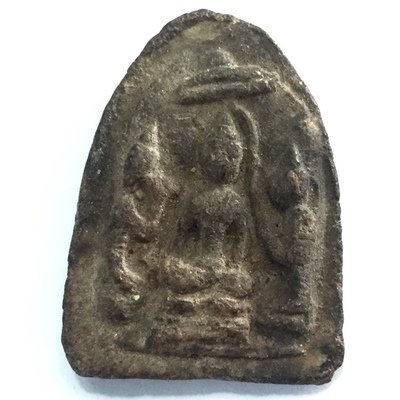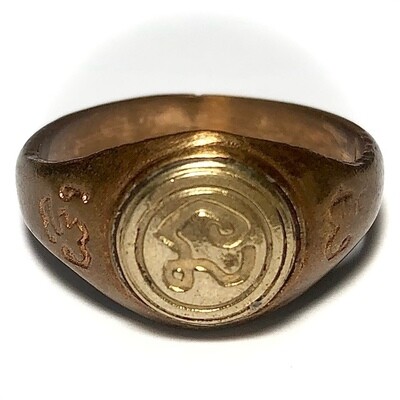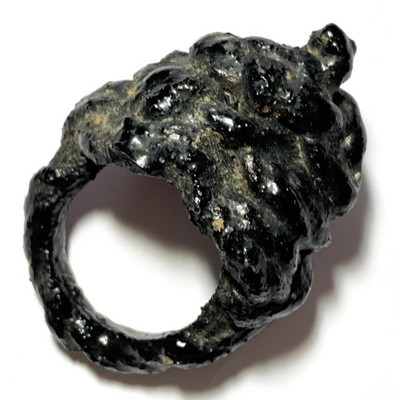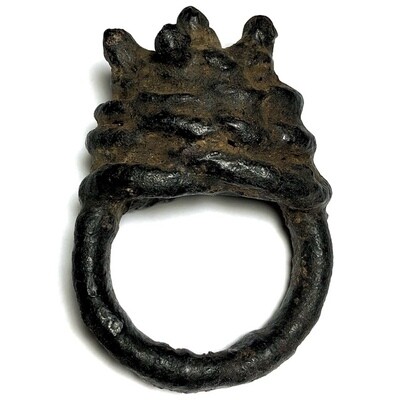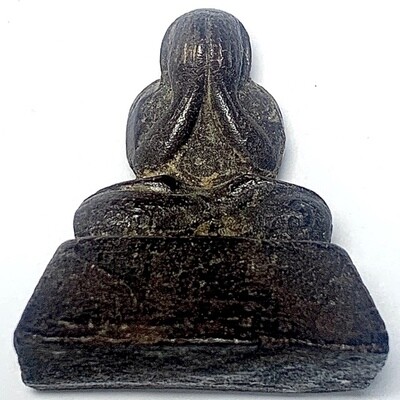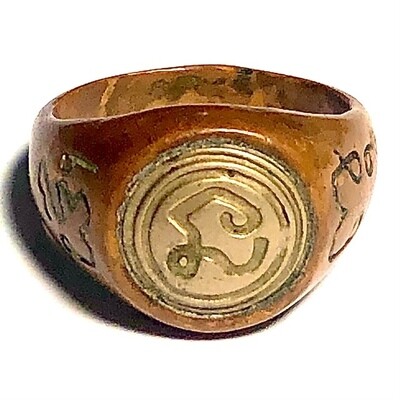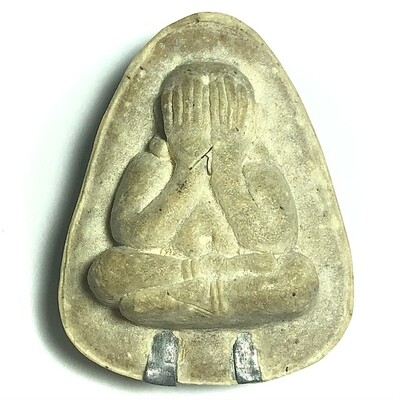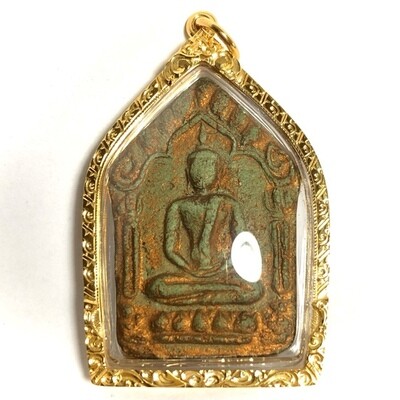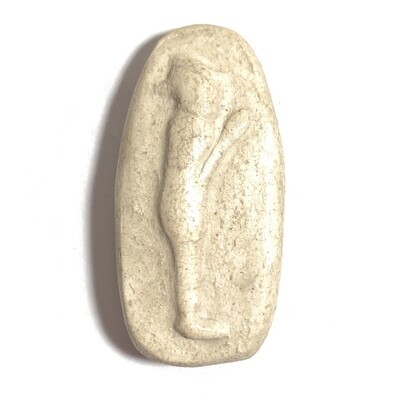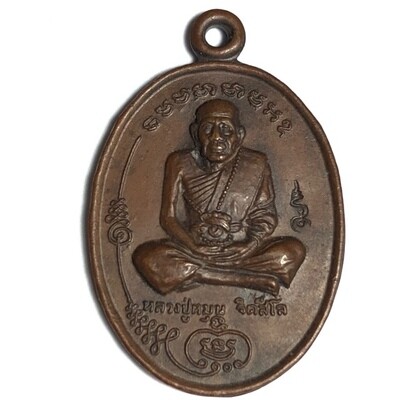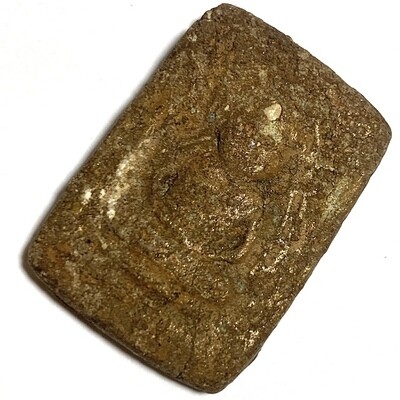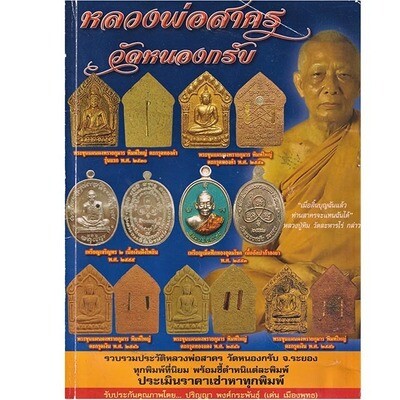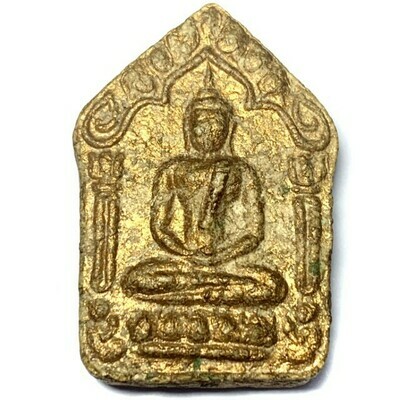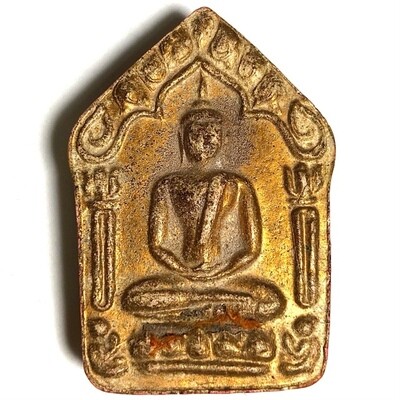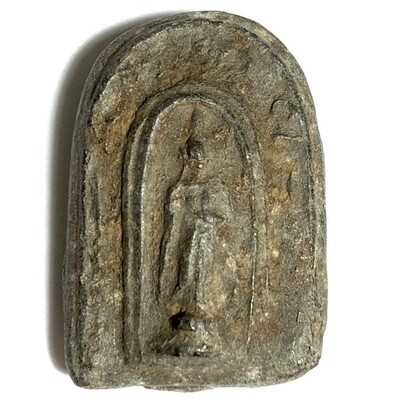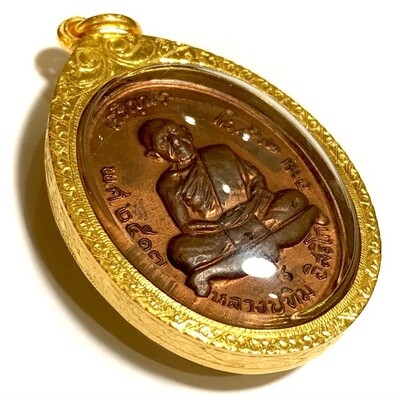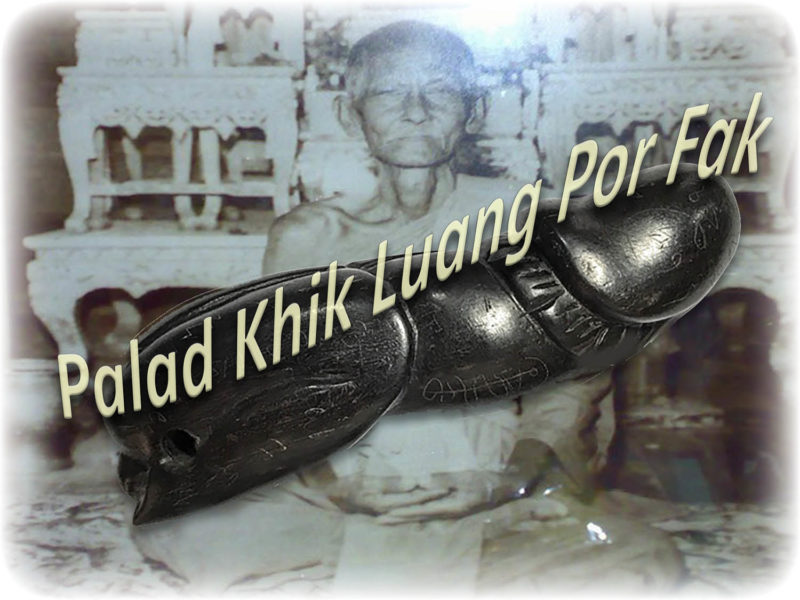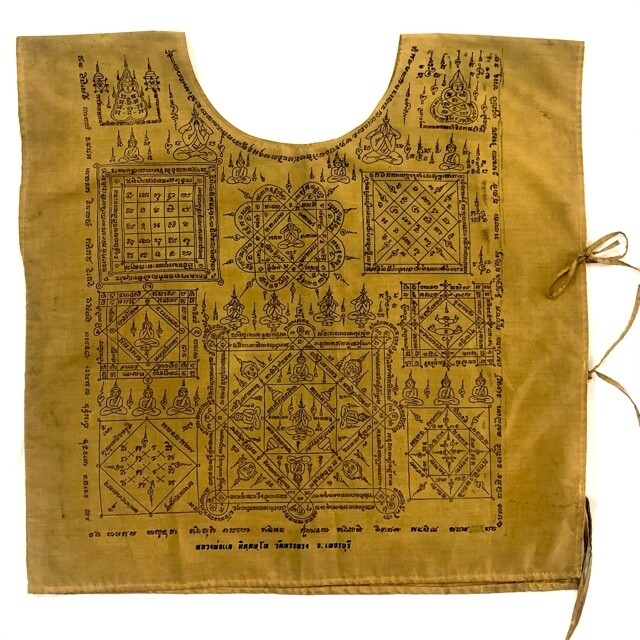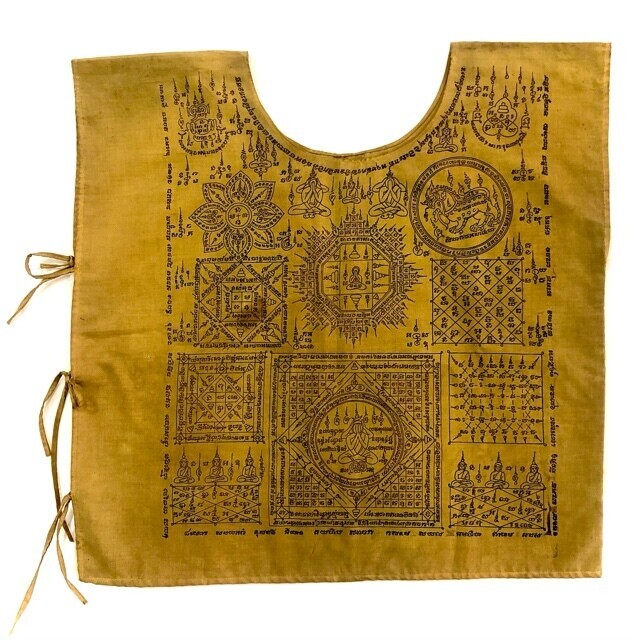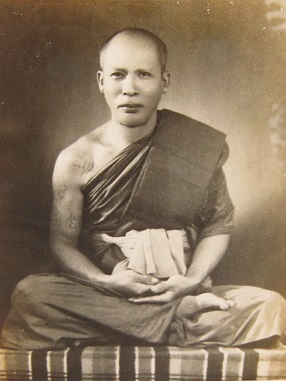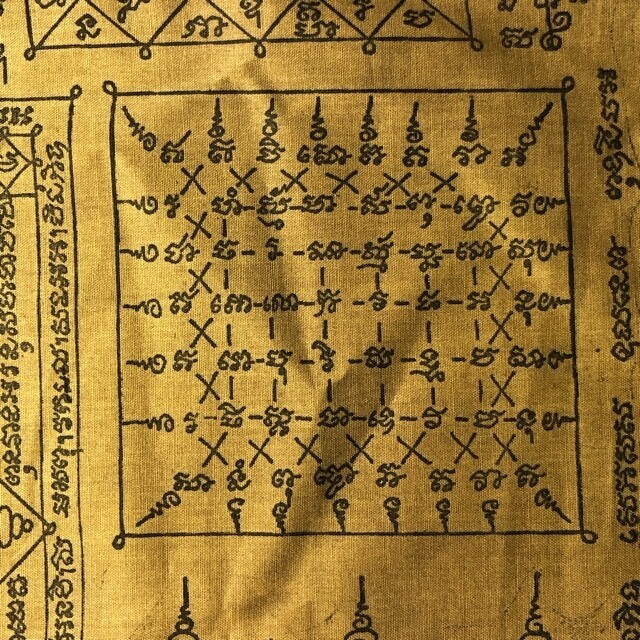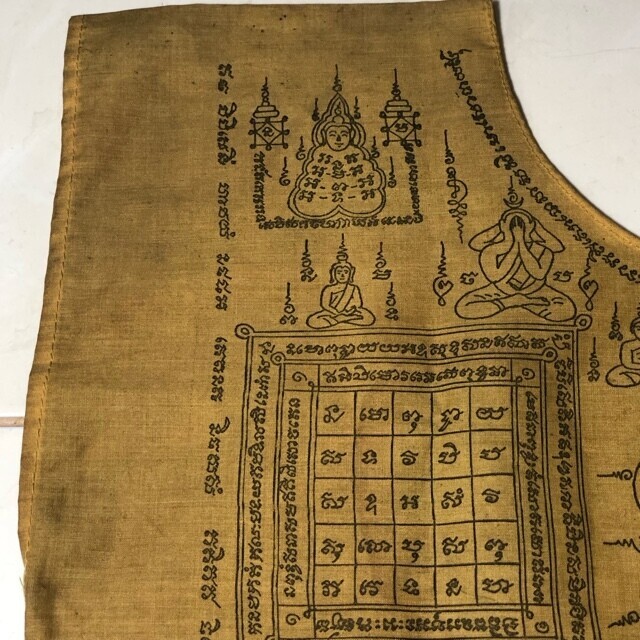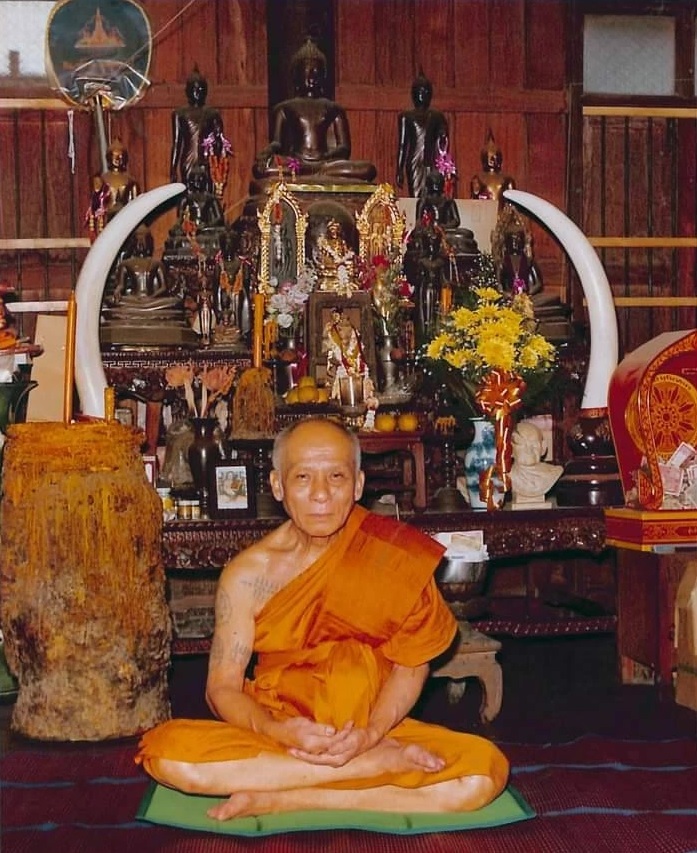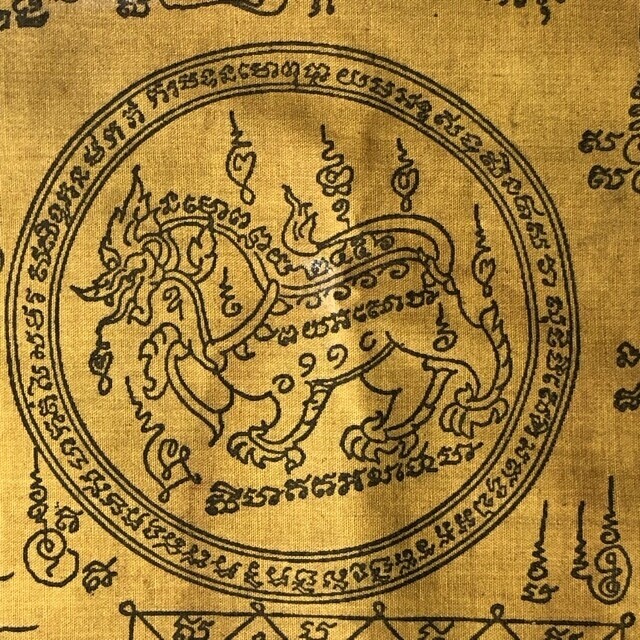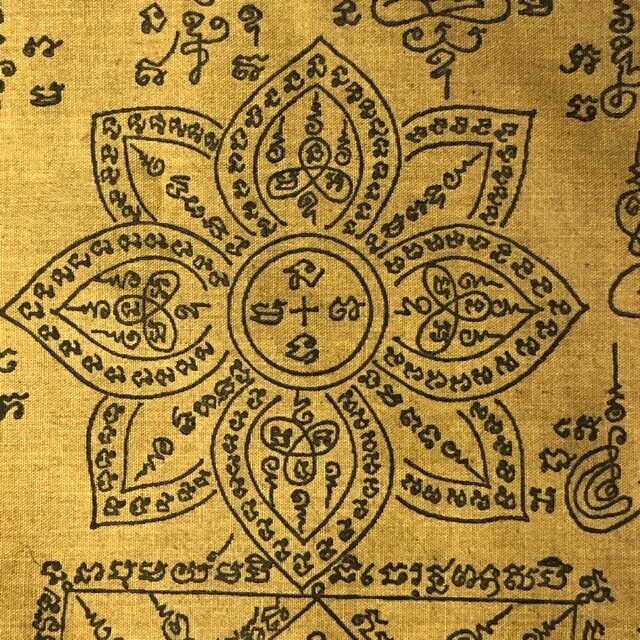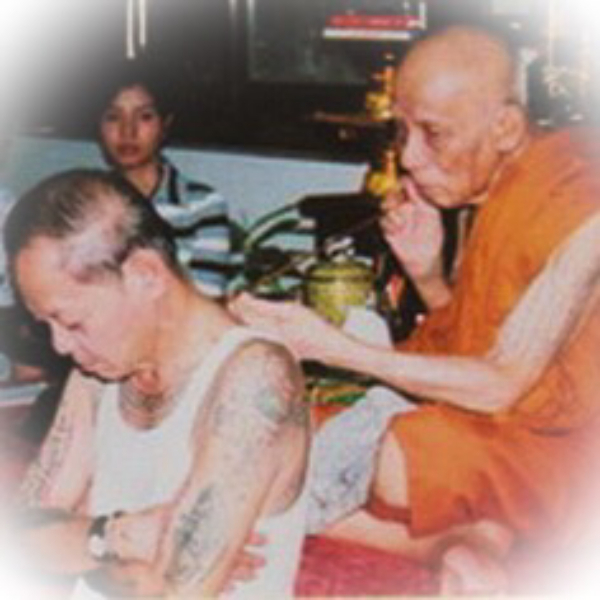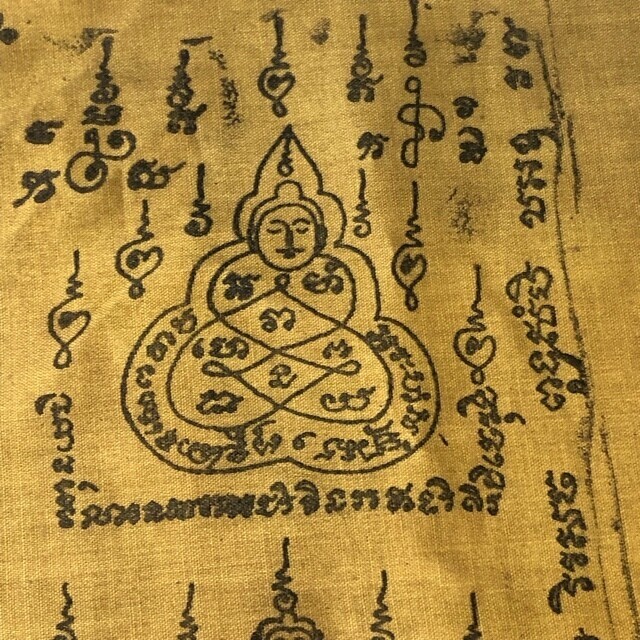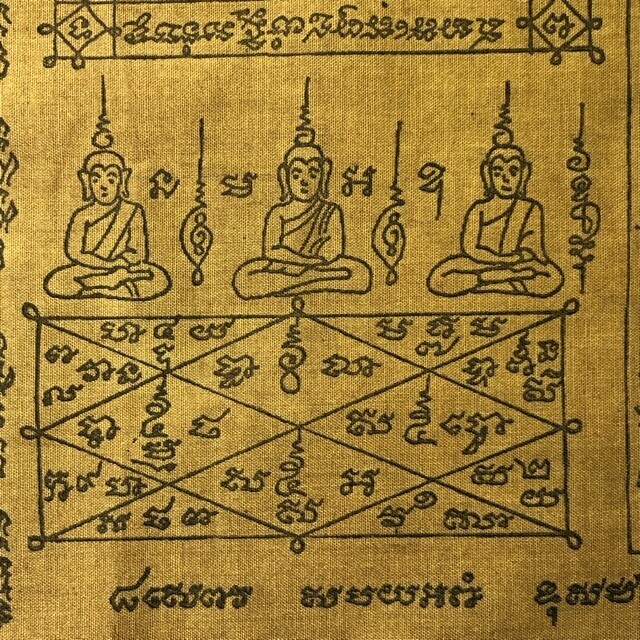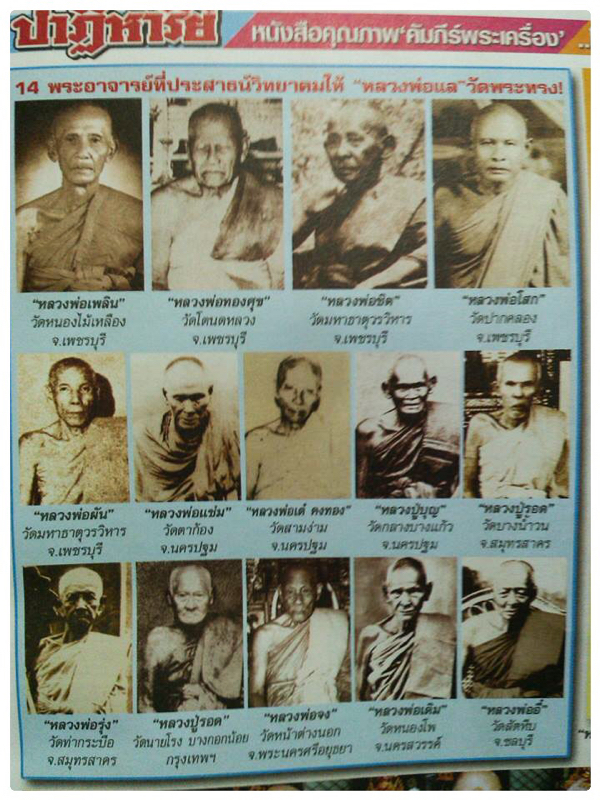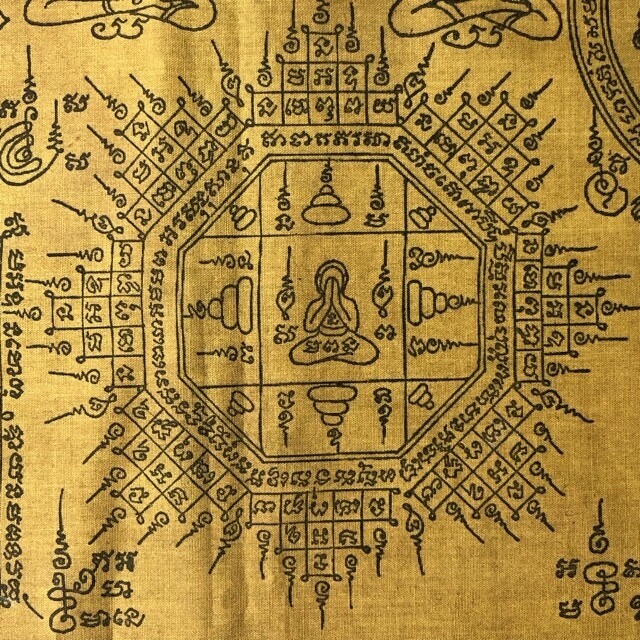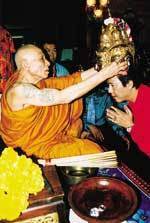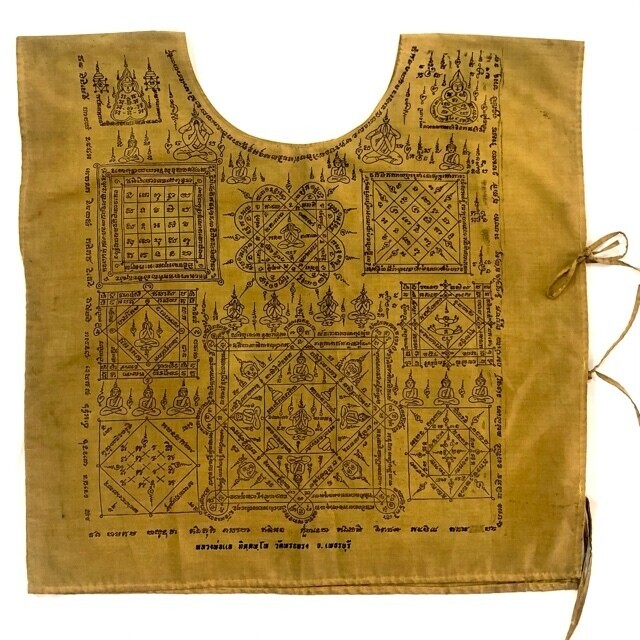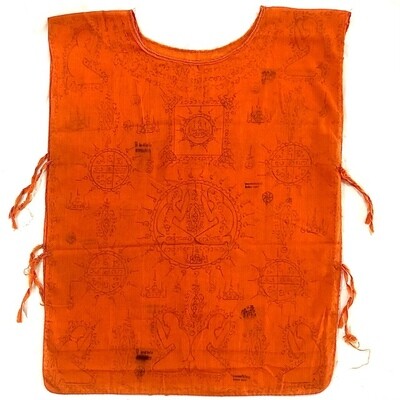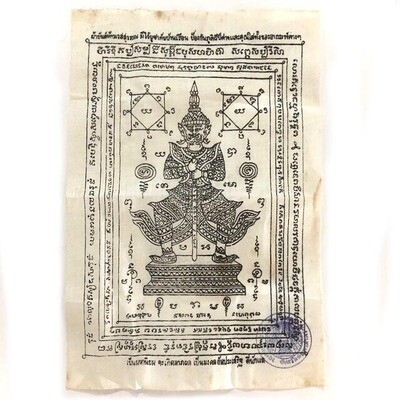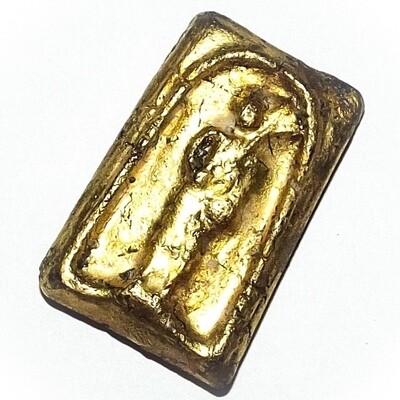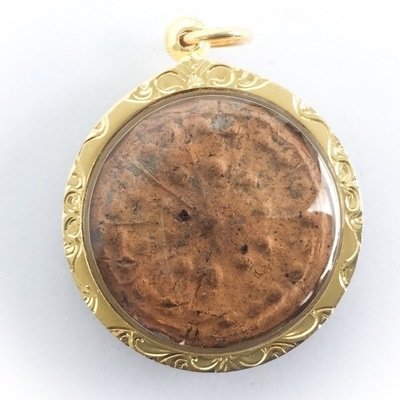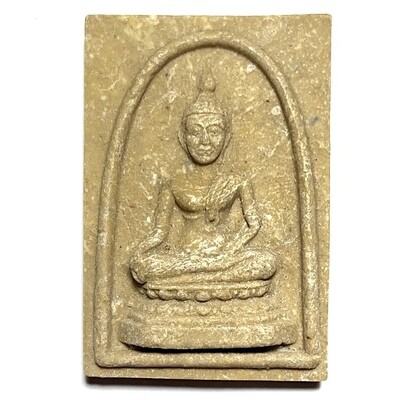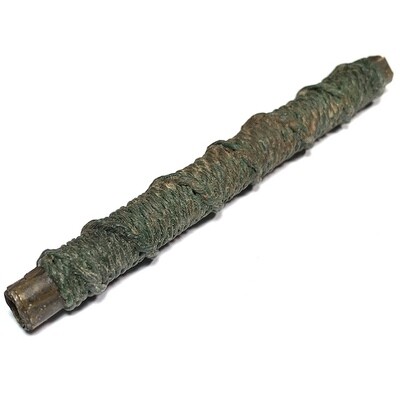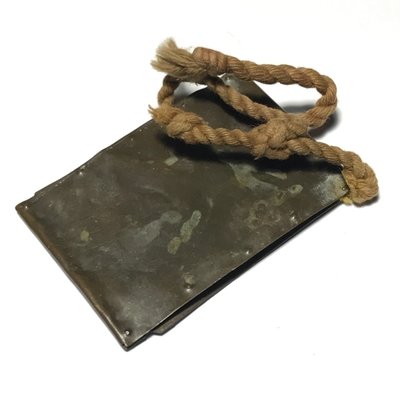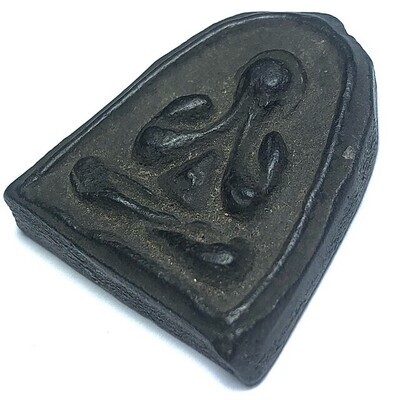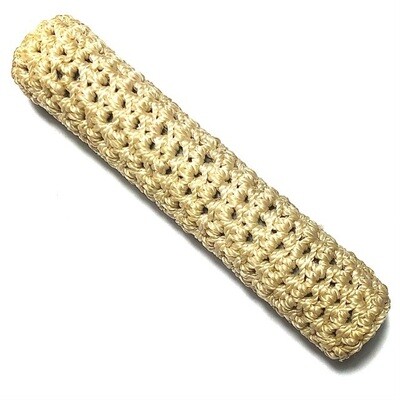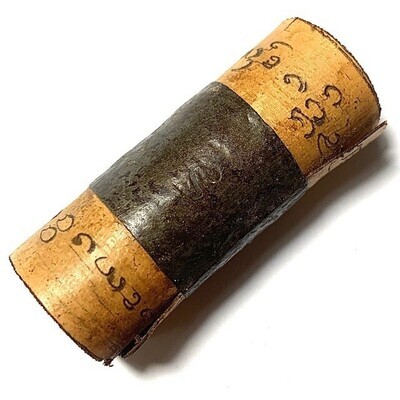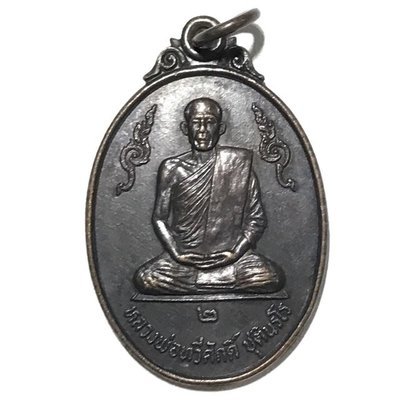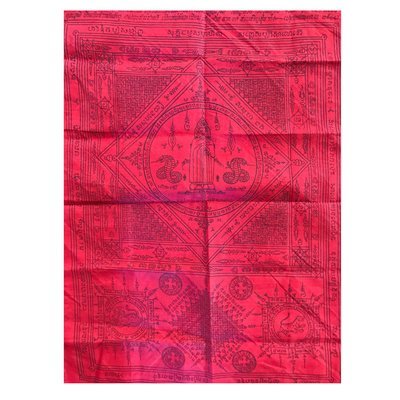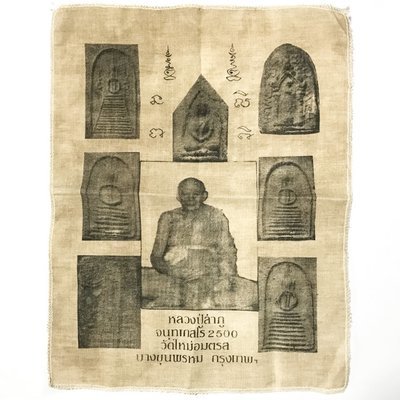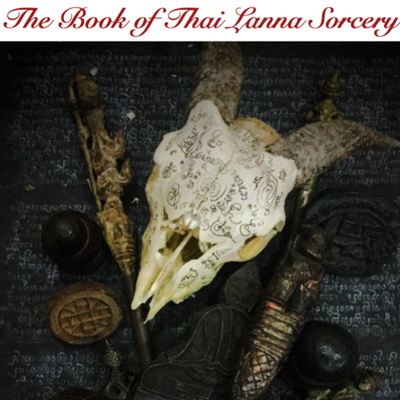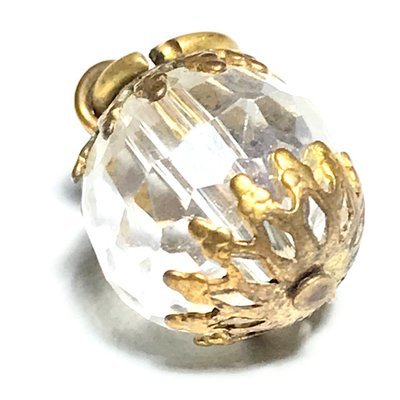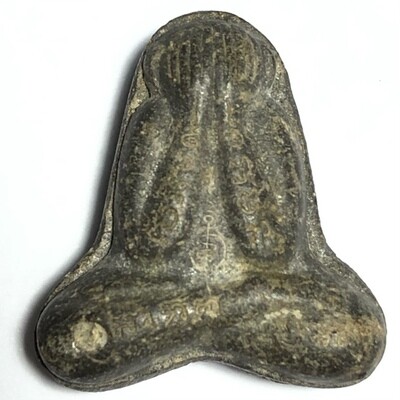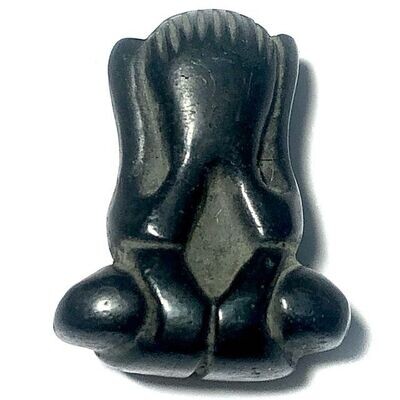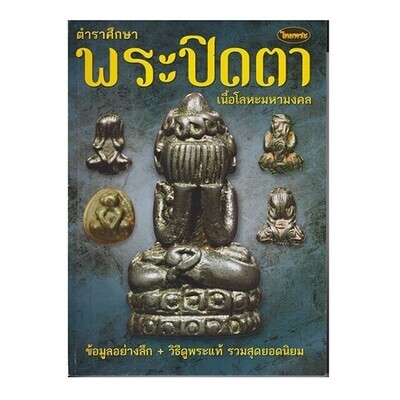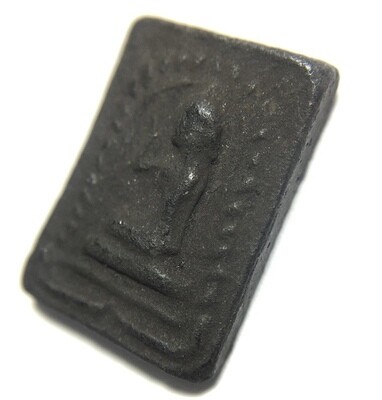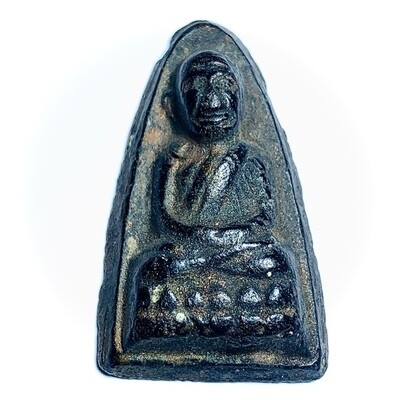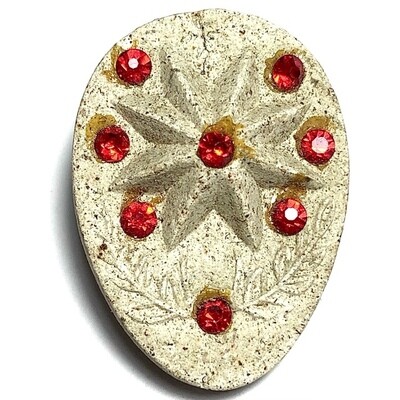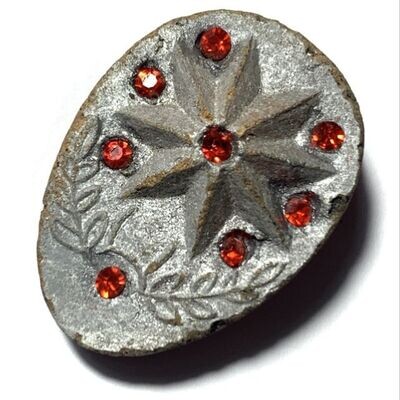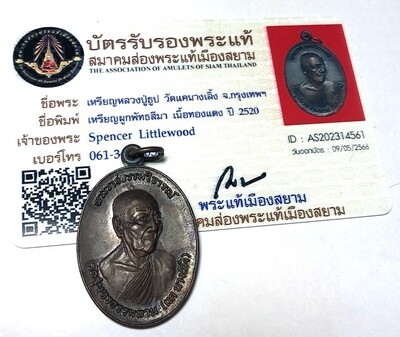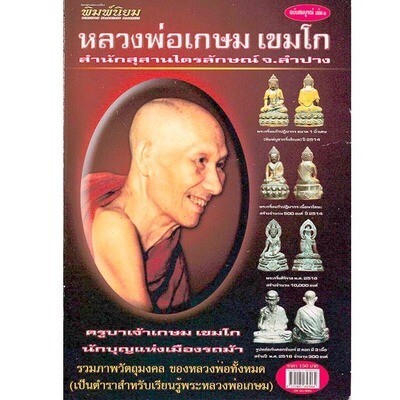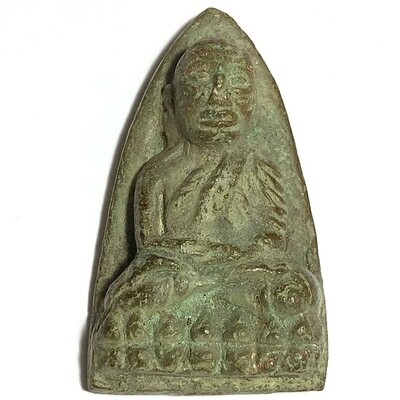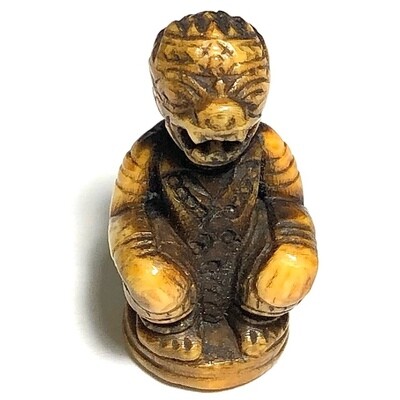One of the rarest and most highly revered and sought after Palad Khik of all Time, the Palad Khik Gae Nuea Mai Paya Ngiw Dam Dong Jarn Mer, of Luang Por Fak, of Wat Nikom Prachasan. Hand carved from sacred Deva inhabited black Ngiw treewood. The Palad Khik of Luang Por Fak is considered amongst the top five Palad Khik of all time, and carries Supreme Eminence in the Thai Collector Scene of the Krueang Rang Category, and for all Devotees of Palad Khik amulets.
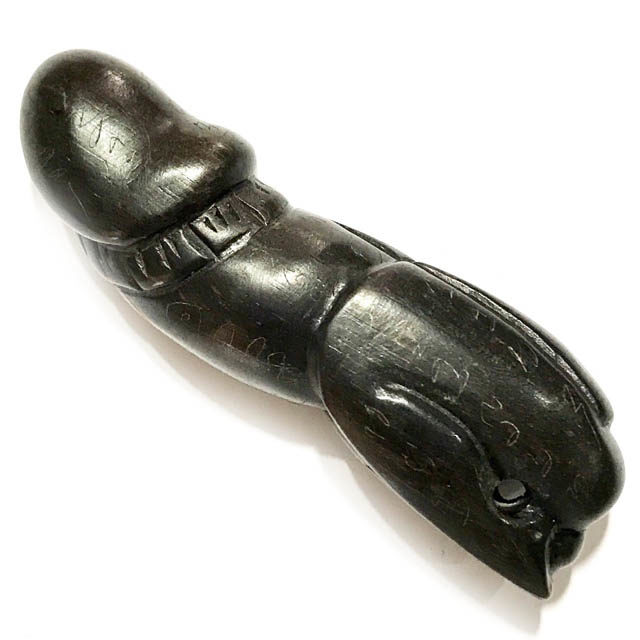
Palad Khik Mai Ngiw Dam Dong LP Fak with Hand Spell Inscriptions
Little is known of his Biography or Life before ordination, but it is known that he was the apprentice in Wicha to the great Luang Por Soke (also top 5 Palad Khik Master), and was the4 Kroo Ba Ajarn who taught the Wicha Palad Khik to the Great Luang Por Yid, of Wat Nong Jork. This Palad Khik from Luang Por Fak is in Pristine condition and exquisitely carved in the classic uniquitious curved shape which has come to be a trademark with the Palad Khik of Luang Por Fak.
A hole is drilled through the base of the Palad Khick for threading a cord through and attaching to a waistcord belt, or can alternatively be encased in waterproof casing with pendant hoop for wearing on a neckchain or belt as preferred.
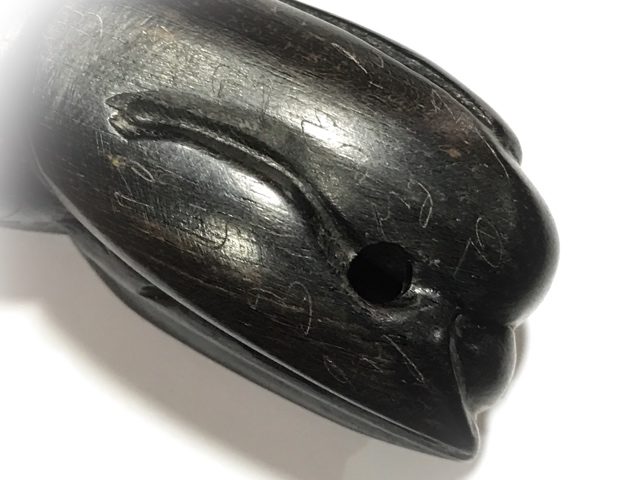
Hole drilled in base of Palad Khik Mai Ngiw Dam Dong LP Fak, for threading a cord for attachment to a belt or neckchain – Hand spell inscriptions can be seen on the surface of the sacred black Paya Ngiw Dam Dong Treewood.
The back of the Palad Khik has three holes where special Muan Sarn is inserted. The body of the the Palad Khik is formed in the clasic curved shape which has become known to be ubiquitous with the Palad Khik of this Master. This exhibit is extremely rare for the hand inscription of the Yant Dan Dta (Yant Dto) on the head of the Palad Khik, which is said to be found on only very rarely.
The Palad Khik of Luang Por Fak are highly renowned for Kong Grapan Chadtri (Invincibility), Klaew Klaad (Evasion of Deadly Accidents), Metta Maha Niyom n(Mercy Charm), Kaa Khaay (Selling Power), and Lai Phuudt Phii Pisaj (Chase Demons and Ghosts Away).
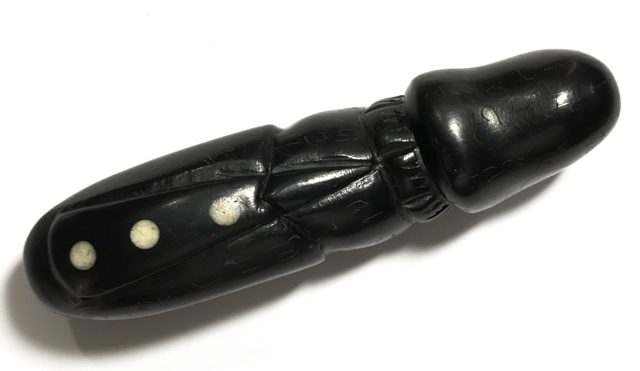
3 Muan Sarn Inserts in the Palad Khik Mai Ngiw Dam Dong LP Fak
The Palad Khik is empowered with the Kata; NA HI HA HU JA CHA DAN DTA
And the Kata Hua Jai Taw Waes Suwan “WAE SA PU SA”, and the Kata Hua Jai Ittijae for Metta Maha Sanaeh “I TA KA MA”, as well as the Kata Hua Jai Metta Karaniya Sutta “AE DTANG SA DTING”, topped off with the Hua Jai Maha Ud “UT TANG AD TO”.
11 Kinds of Blessings are included within the Magic of the Palad Khik’s Wicha; 1. Sleep peacefully, 2. Awaken with Happiness, 3. Protection against all Deadly Weaponry, 4. Immunity to Poisons, 5. Mercy Charm, 6. Good Business and Wealth Increase, 7. Convincing Speech, 8. Ward off Evil Spirits and Ghosts, 9. Improve Karma, 10. Protect Household and Property, 11. Increase Popularity & Chances of Promotion.
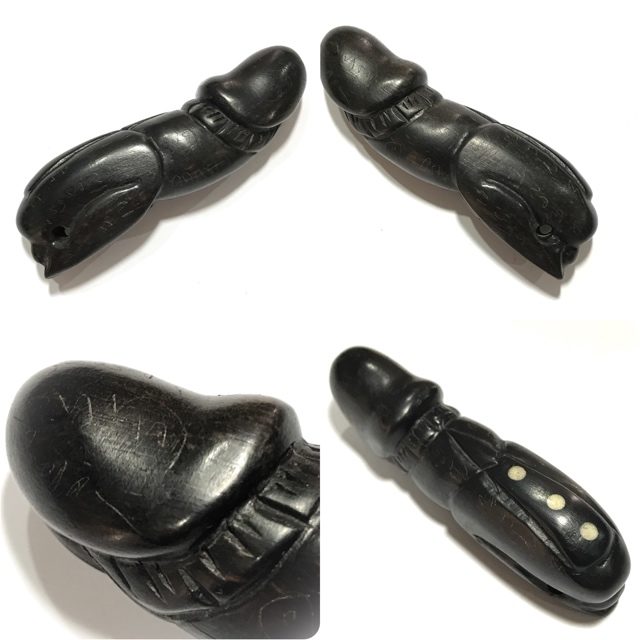
Palad Khik Mai Ngiw Dam Dong LP Fak
The Palad Khik is an Ancient Wicha, whose development can be traced right back to the Vedic Brahman Occult practices of Thousands of Years ago. Palad Khik amulets must be empowered by the repetition of incantations, which Thais call ‘Kata Bucha’, derived from the Devanagari ‘ghata poojah’. The incantations depend on the creator’s lineage in each school of traditional non-Buddhist animist magic.
Kata Bucha Palad Khik
Ganha Neha Na Ma Pa Ta
or
Ja Pa Ga Sa Na Mo Put Taa Ya Gan Ha Nae Ha Na Ma Pa Ta
or
Om Siwaling Sabbha Metta Sabbha Pokaa Sabbha Laapo Sabbha Tanaa, Sabbha Yasa, Sabbha Pranee Sabbha Mangalaani Bhavantume.
or
Om Laluay Mahaa Laluay Samsip Sorng Hee Hae Hom Lorm Dtorm Kuay Khor Hai Guu Ram Ruay Pro Hua Kuay An Nii Da Daa Di Dii Duu Dii Hee Maa Kuay Maa Burut Maa Dii Sadtrii Mii Maa Swaa Home
chant any one, or all of the Kata 3 times holding the Palad Khik before wearing
Suea Yant Kong Grapan Chadtri Luang Por Lae Wat Pra Song 21 x 21 Inches
An extremely rare, highly valuable, and old Suea Yant Kong Grapan Chadtri Klaew Klaad Maha Ud Serm Yos, in pristine condition, with a plethora of Sacred Yant emblazoned on the Sacred yantra shirt, which is of course an undervest for protection, invincibility, commanding power, mercy charm, and evasion of dangerous and inauspicious circumstances. This exhibit is one of the rarest items one could encounter, from Olden Days Sak Yant Thai Temple Tattoos Master, Luang Por Lae, of Wat Pra Song, in Petchburi.
Luang Por Lae was a respected Thai Buddhist monk known for his expertise in creating Sak Yant tattoos, which held significance in Thai culture and spirituality. His skills had been honed through training from various accomplished masters in the field, and his tattoos had been sought after for their spiritual significance and protective qualities.
The Suea Yant is in Ochre (Jivara Monk Robe Silken fine-weave Linen Cloth), and has incredibly sharp and clear details on the Sacred yant embossed, each Yant in extreme detail with complex Buddhist and Occult Formulas of Spell inscriptions in ancient Khom Agkhara, filling and surrounding each Yantra spell. The amalgamation of all these different Yant forms an Adamantine spiritual crystal wall of Buddhas, Bodhisattvas, Herukas and Dakinis, devas, Himapant Protective Deities, the Ruesi, and the Hindu Trinity to protect and serve to bless in all areas of life.
Below; Yant Grao Paetch Diamond Armor Yantra
The below image shows a Buddha Yantra on the shoulder, with the 4 elements incantation 'NA MA PA TA' and eight 'A' syullables (for 'Arahang'/ASrahant/Buddha). Below that is another Yant Ongk pra Buddha-Yantra, and a Yant Pra Pid Tawarn 6 armed Nirodha Buddha image. Below that is a Magic Square yant with the Itipiso mantra, 'A SANG WI SU LŌ BU SA PU PHA' (Kata Novahorakun), and 'NA MŌ PUT TĀ YA' (Kata Pra Putta Jao Ha Pra Ongk).
Luang Por Lae Tidtappo of Wat Pra Song in Petchburi, was a direct Looksit apprenticed in Dhamma and Sorcery to two of the Greatest Masters of Olden Days, the legendary Luang Por Tong Sukh of Wat Tanode Luang, and Luang Por Plern of Wat Nong Mai Luang. Luang Por Lae was born in the year 2459 on the 19th June, in Tambon Rai Makham in Ban Lard, Petchburi Province. He was ordained into the Buddhist Sangha at the age of almost 20 Years old on the 24th of May 2499.
Luang Por Lae was a Thai Buddhist monk who was renowned for his expertise in creating Sak Yant tattoos. Sak Yant tattoos were sacred designs, often representing Buddhist symbols, that were traditionally inked onto the skin. Luang Por Lae was well-known for his proficiency in this art form and had received training from respected teachers, especially in the field of high-level spiritual tattoos.
He had learned and honed his skills in Sak Yant from several accomplished Ajarns (masters), particularly those who specialized in the enhancement of spiritual insight through tattoos. Luang Por Lae had created various Sak Yant designs, which were typically intricate patterns with deep spiritual significance in the Buddhist tradition. These tattoos were considered to be a form of protection and carried spiritual power.
Below; Yant Rachasri
Luang Por Lae's mastery in Sak Yant had earned him a prominent place in the realm of Thai Buddhism and culture. His work had been highly regarded for its artistic and spiritual value, and his tattoos were often sought after by those seeking spiritual guidance and protection.
Luang Por Lae studied Sorcery with a total of 14 different Masters; LP Plern (Wat Nong Mai Lueang), LP Tong Sukh (Wat Tanode Luang), LP Chit (Wat Maha Tat Petchburi), LP Soke (Wat Pak Klong), LP Pan, LP Te, LP Chaem, LP Bun, LP Rod (Wat Nai Roeng), LP Rod (Wat Bang Nam Won), LP Rung Wat Ta Graber, LP Jong (Wat Na Tang Nork), LP Derm (Wat Nong Po), and Luang Por Ee (Wat Sattaheeb).
Below; Yant Bua Gaew Paed Gleep (Paed Tidt)
Luang Por Chit of Wat Mahatat, taught him the adept levels of Wicha Horasart (Astrology and Fortune Telling), and it is said that Luang Por Lae attained the 6th sense in this Wicha, and was able to foresee future events. Luang Por Soke of Wat Pak Klong in Ban Laem taught Luang Por Lae the Wicha Pra Khan (Sceptre, Ritual Dagger and Wands Magic). Luang Por Pan of Wat Mahatat Voravihanr taught Luang Por Lae the Wicha of Takrut Tone and Takrut Faed amulets.
The Great Luang Por Plern of Wat Nong Mai Luang, Famous for Wicha Hwaen Pirod, and Kong Grapan Magic passed on his magical secrets to Luang Por Lae. Luang Por Tong Sukh, Wat Tanode Luang, who taught him to perform Wicha Sak Yant Kroo, which was the most powerful Yant in his particular Magical Dtamra, namely the Yant Hua Jai Pra Ram (Heart of Rama Yantra), which controls the powers of all other Yant which are tattooed thereafter on the devotee, including the Ling Lom Vanora, Hanuman, & Gold and Silver Hongsa Swans.
He was taught the Wicha Sak Yant Maha Maekh from Luang Por Dtor and Kun Por Jantr of Wat Khao Wang in Petchburi, and after their passing, for a long time, Luang Por Lae remained the only Monk able to perform this Wicha.
Below; Yant Ongk Pra, with Khom Inscriptions which translate roughly as "I believe and have faith, in the Buddha in the Center of the Lotus"
In the year 2489, an event happened that caused Luang Por Lae to receive a shock, as he was staying at Wat Maha Tat, where some terrible news about his family home had been broken into by marauders, who killed his mother and siblings (his father had already passed away beforehand). The only thing left in the home was a piece of gold weighing 100 Grams which the thieves had dropped as they fled the house, which Luang Por Lae had to use to cash in to pay for the funerals of his mother and siblings.
Because of this sad event, Luang Por Lae decided to go and practice Tudong solitary forest wandering on foot, throughout the land. He decided to do this in order to master powerful Wicha, in order to be able to help people in future to prevent such terrible events from happening, and to be able to perform magical miracles to protect people from being harmed, as his own family had been.
Below; Pictorial and Geometric Yant in combination
He wandered through the then still wild and undeveloped areas between Petchburi and reached as far as Nakorn Pathom province on foot, and met with and practiced many forms of Wicha with various great Masters of that time, in particular, the Wicha Kala ta Diaw Rahu Om Jantr (one-eyed coconut Pra Rahu Maha Ud Gunstopper spell), and the Wicha Serm Duang Karma Improver spell of Luang Por Chaem, of Wat Ta Gong. He then Mastered the Wicha Na Hnaa Tong Golden-faced Lakshman gold leaf forehead blessing from the Great Luang Por Te of Wat Sam Ngam, the Wicha Pong Jinda manee, and Wicha Bia Gae Cowrie Shell amulet making spell from Luang Por Bun of Wat Klang Bang Gaew.
Below; the 14 Kroo Ba Ajarn of Luang Por Lae
After this, he traveled onwards to Samutr Sakorn, and Mastered further Wicha; Wicha Choo Chok with Luang Phu Rod of Wat Bang Nam Won, and the Wicha Takrut Mai Phai (bamboo Takrut). As Luang Por Lae approached Bangkok, he passed by Tonburi, and furthered his Wicha Bia Gae with Luang Phu Rod of Wat Nai Rong, in Taling Chan Municipality. Then he traveled even further into the Province of Ayuttaya, and learned the Wicha Takrut Puang, and the Wicha of the Yant Hua Jai Pla Tapian Maha Lap from the Great Luang Por Jong of Wat Na Tang Nork. And even further on he traveled Northwards to Nakorn Sawan, to Master the Wicha Sastra Mitmor Ritual Knife making, with the Legendary Luang Por Derm, of Wat Nong Po.
Then he traveled back Eastwards, to learn the Wicha Palad Khik with his Kroo Ba Ajarn Luang Por Ee, of Wat Sattaheeb. Luang Por Lae then went back to Petchburi and used his Wicha to help the Local Devotees and later became Abbot of Wat Pra Song. Luang Por Lae passed away in the Year 2551 BE on the 10th March, at the age of 92 years old.
Wicha Sak Yant LP Lae
Luang Por Lae was famous for his Sak Yant tattoos with his special formula of Nine types of Hanuman/Vanora. However, it is said that after the occasion of having tattooed a 'very important person' he desisted from tattooing the 9th Hanuman and Hanuman number 10, and only would tattoo up to 8 of them on any one person. His amulets are a cult niche collectors material, and are always difficult to find, for it is indeed true, that his Devotees in Petchburi and surrounding province, are so possessive and non-commercial with them that only few amulets from this master ever get to leave the locality, and have mostly been kept within the fold of his parishioners. He is of course an especially revered master to those who are devotees of Sak Yant tattooing, and of those who have become enchanted with the many forms of amulet he made during his lifetime, such as a large array of Hanuman amulets, Ganesha, Taw Waes Suwan, and Por Gae Lersi amulets which were made from hand-carved ivory. He has one of the more attractive pantheons of amulet designs within his magical trajectory, and many of his amulets are considered to be pieces of fine miniature Buddhist art in their own right. He is also a highly regarded historically famous master, due to the fact that he learned under tutelage in Sorcery and Dhamma, from the incredible number of 14 other great Guru Master Ajarn, who bestowed him with their Wicha.
